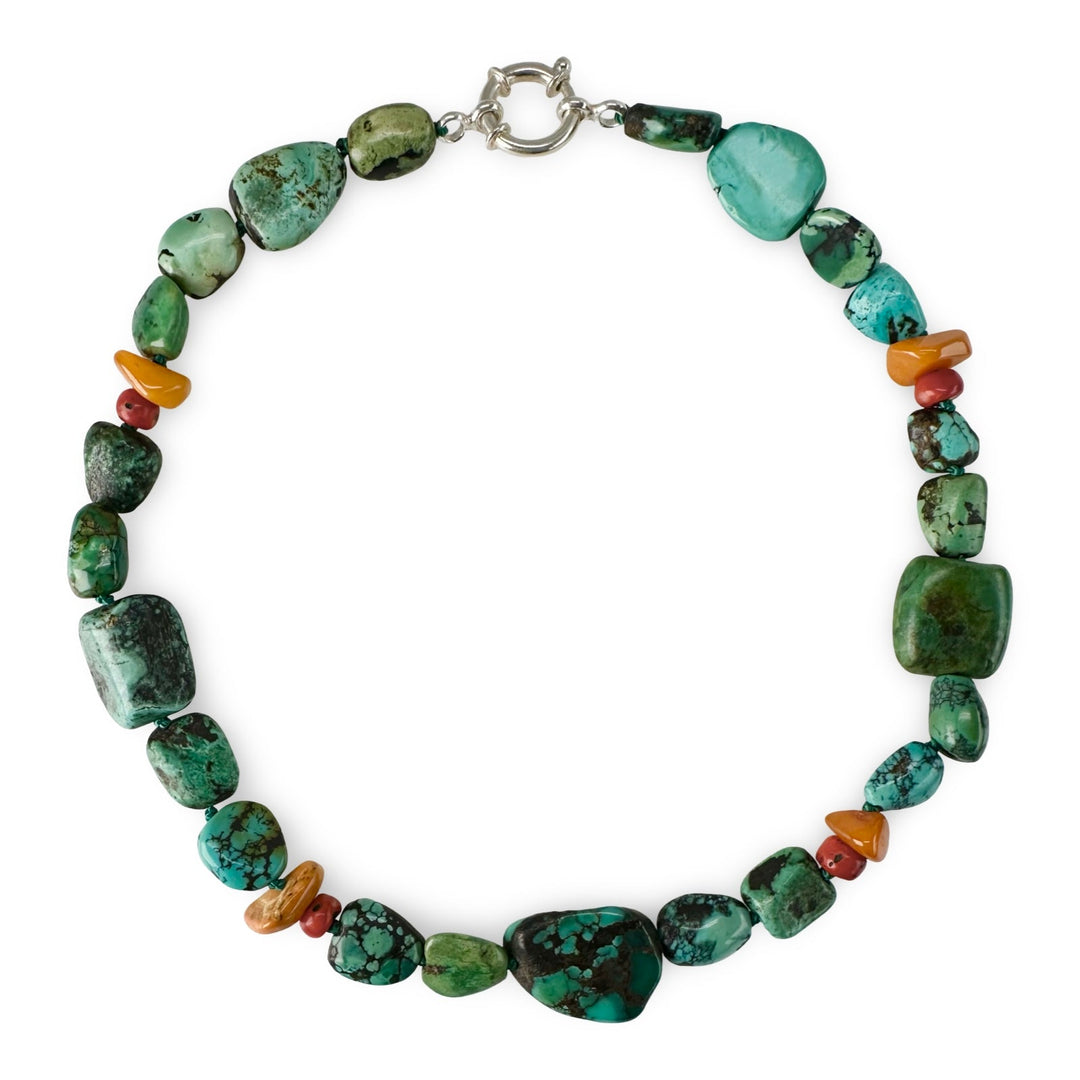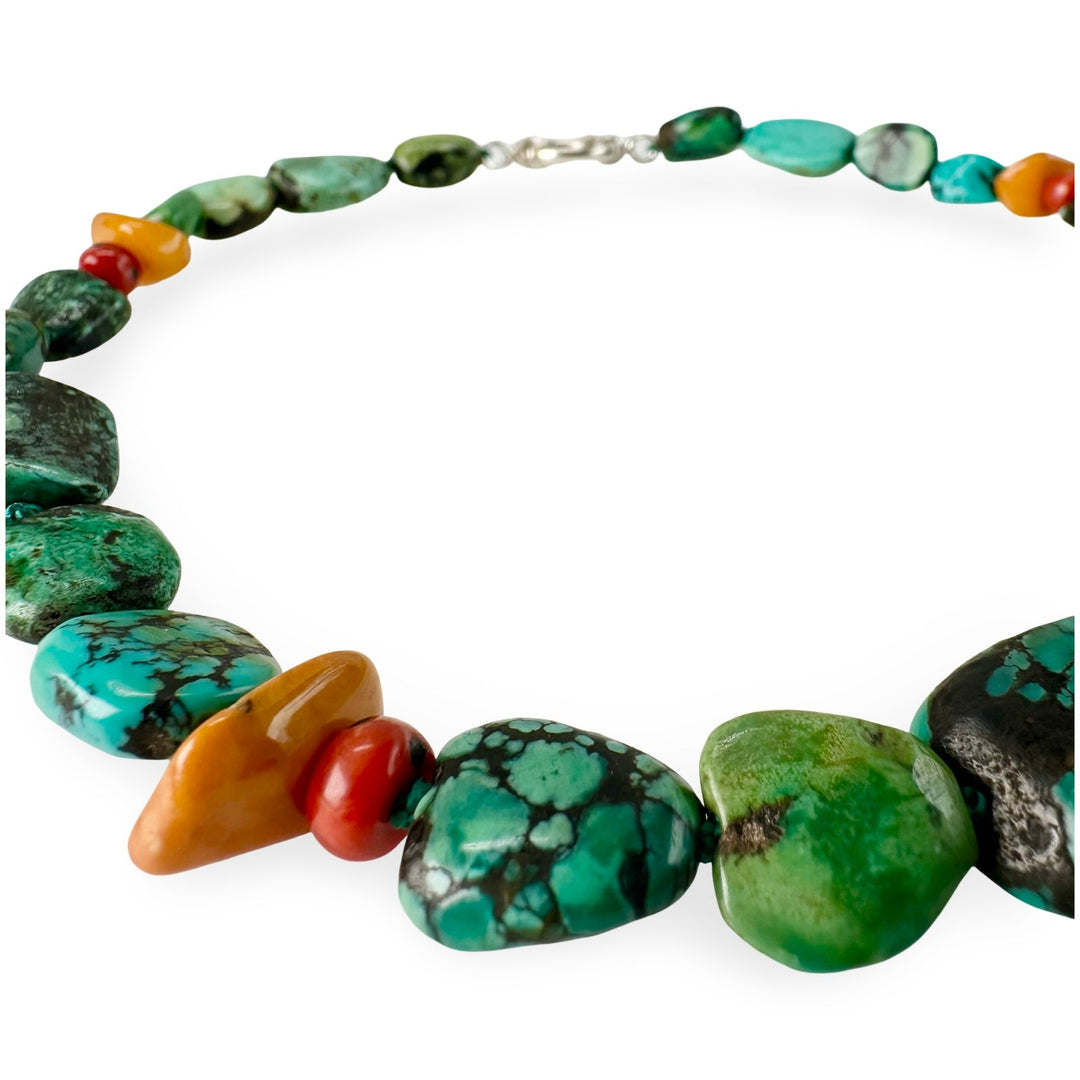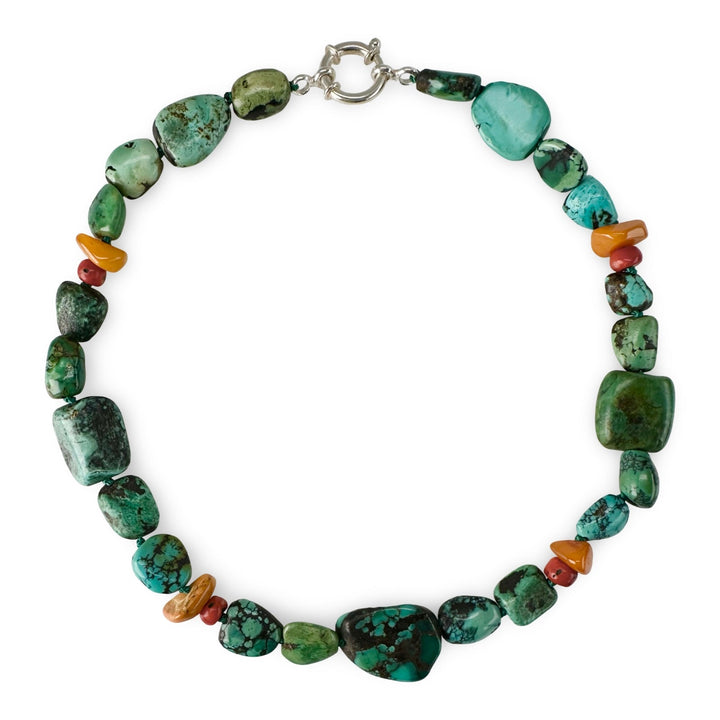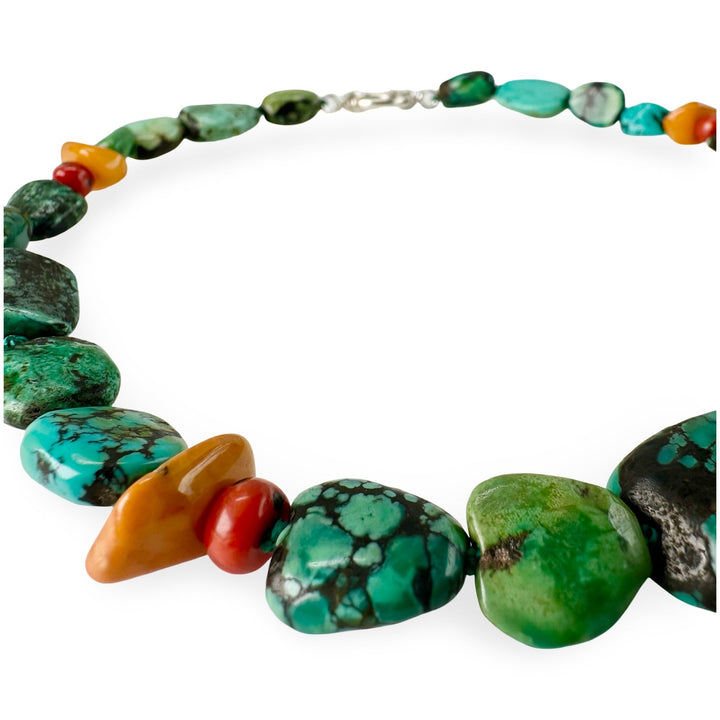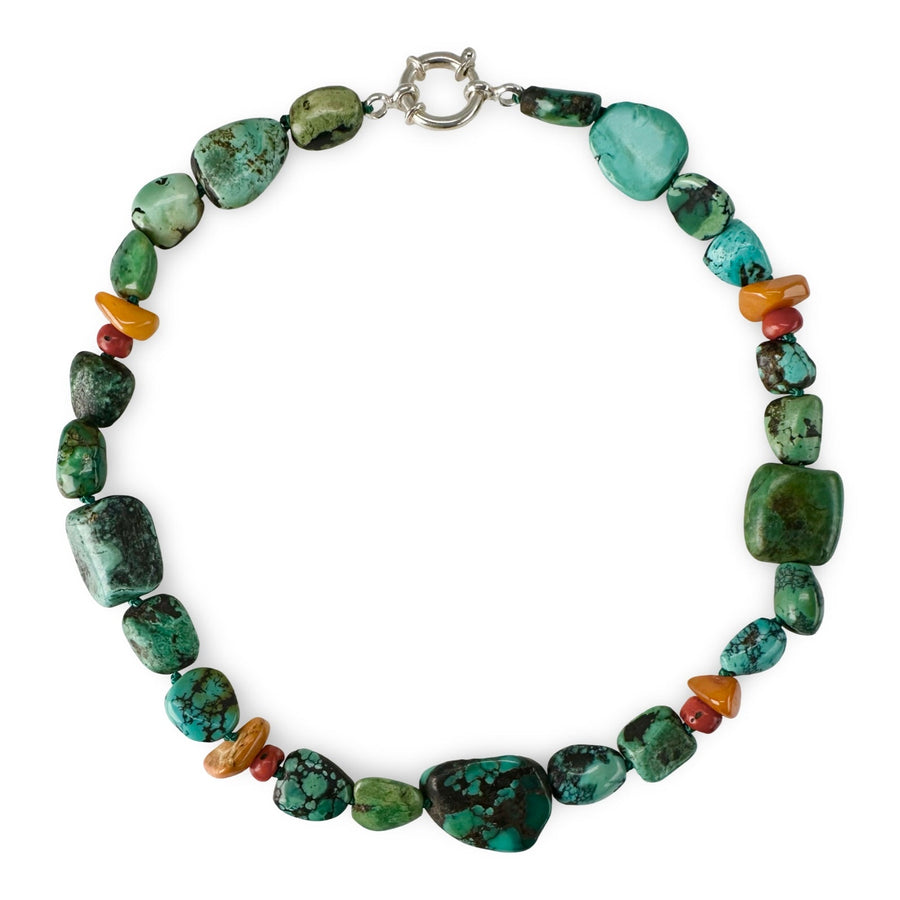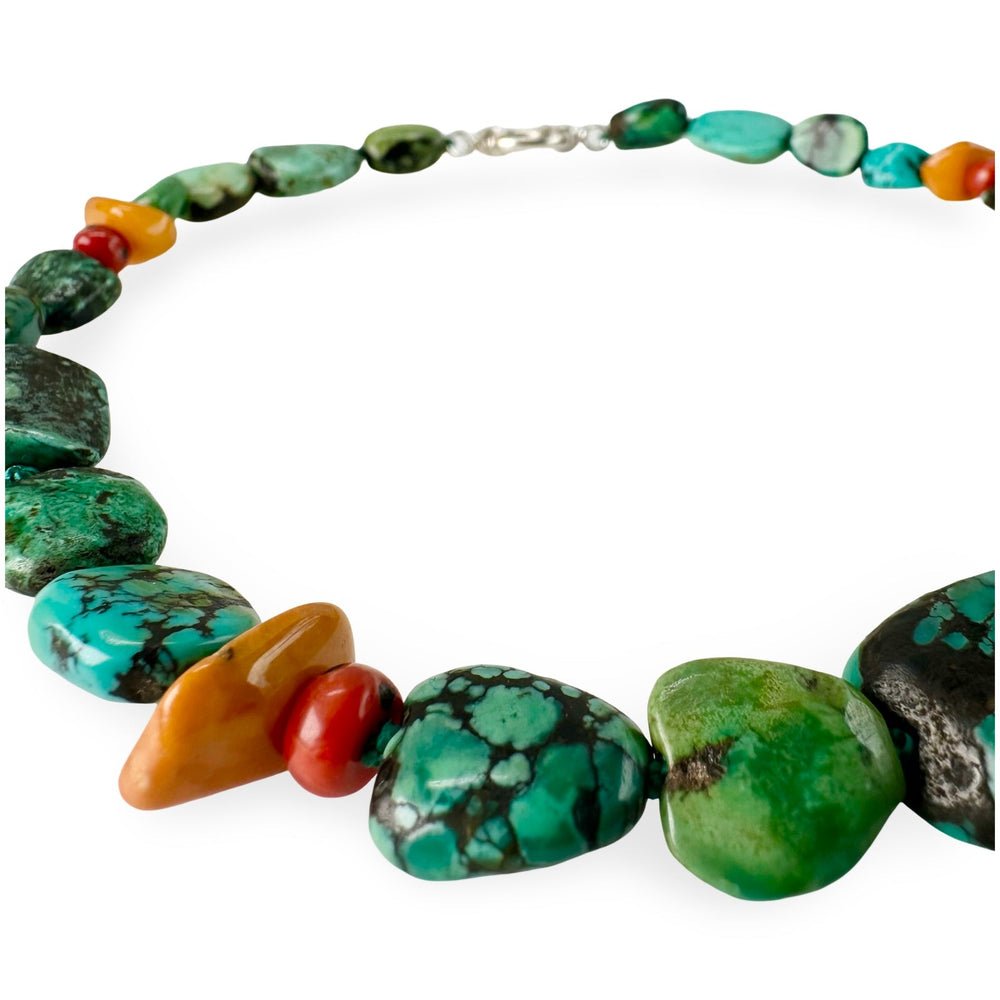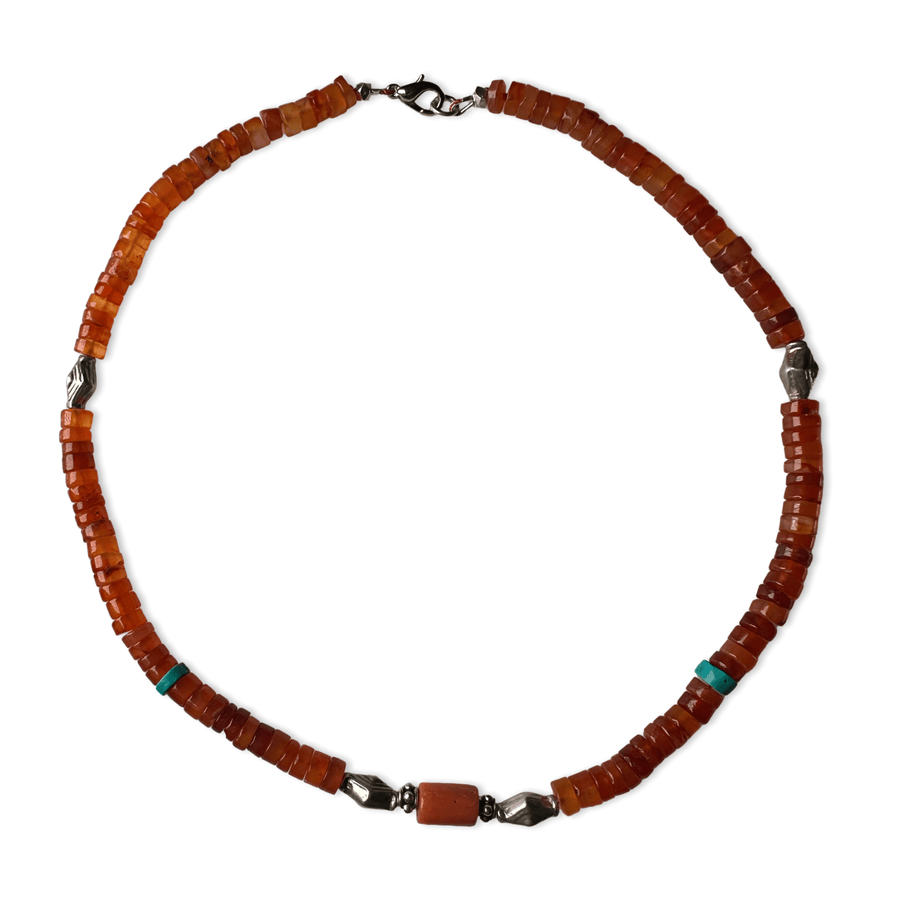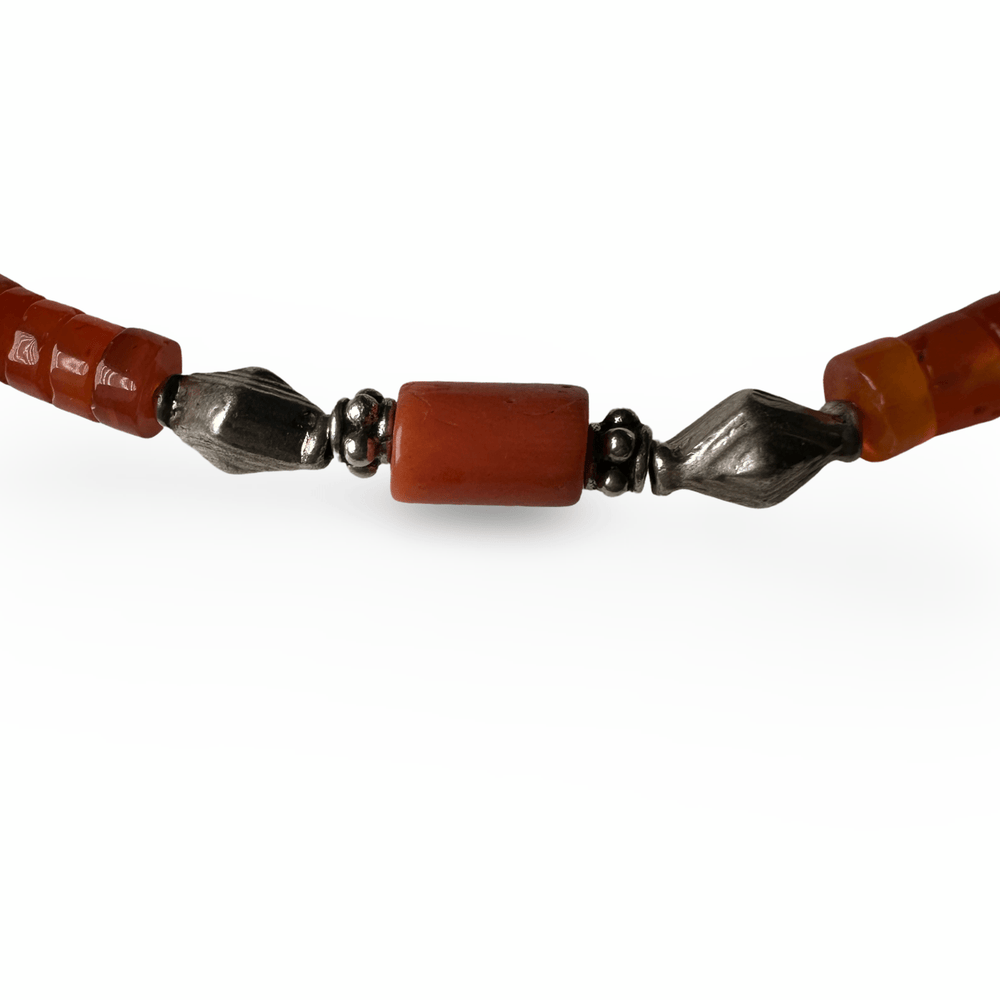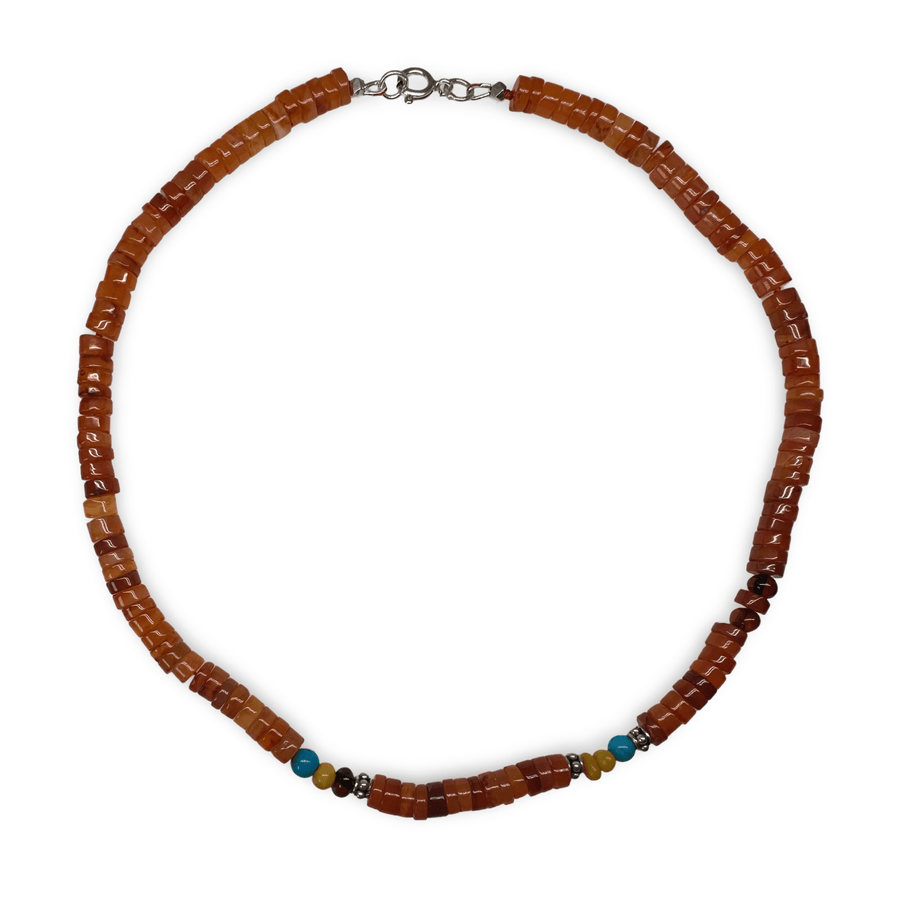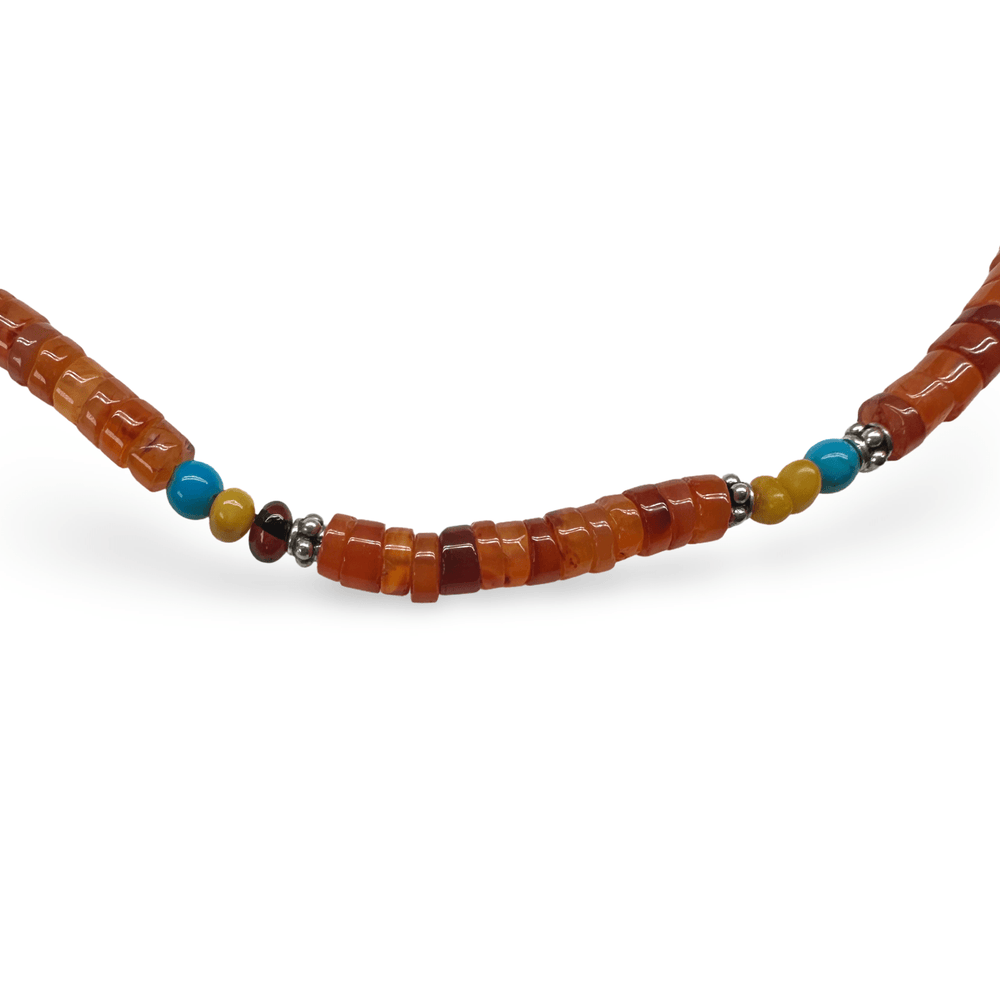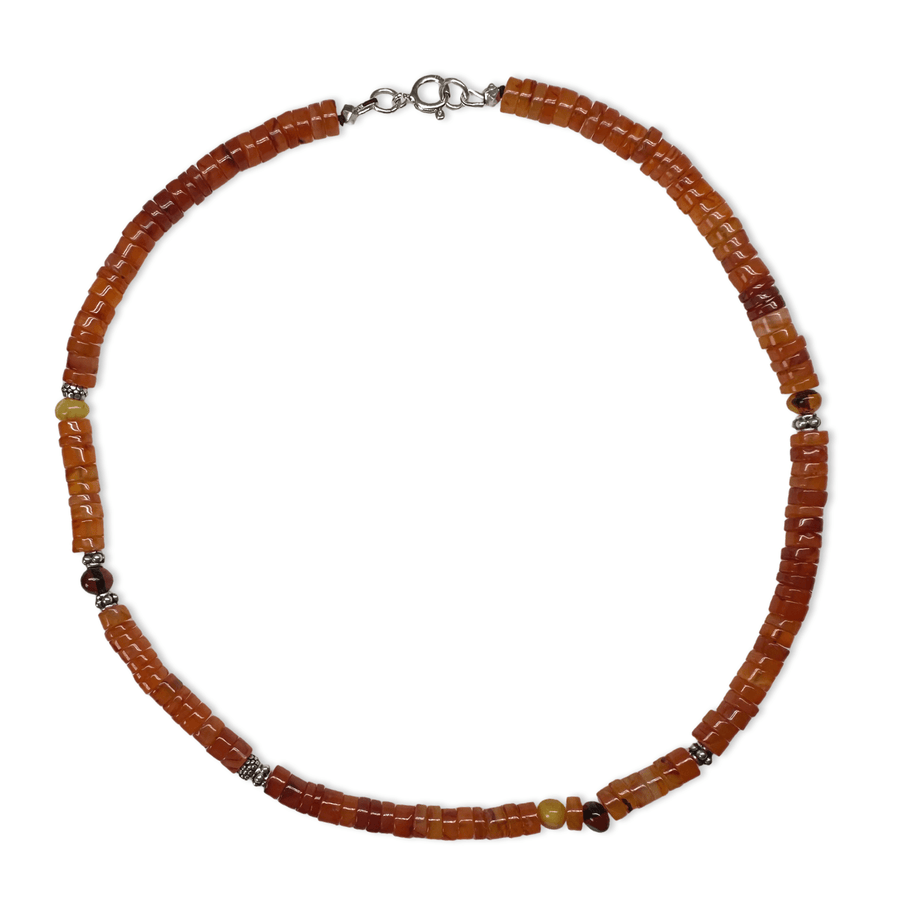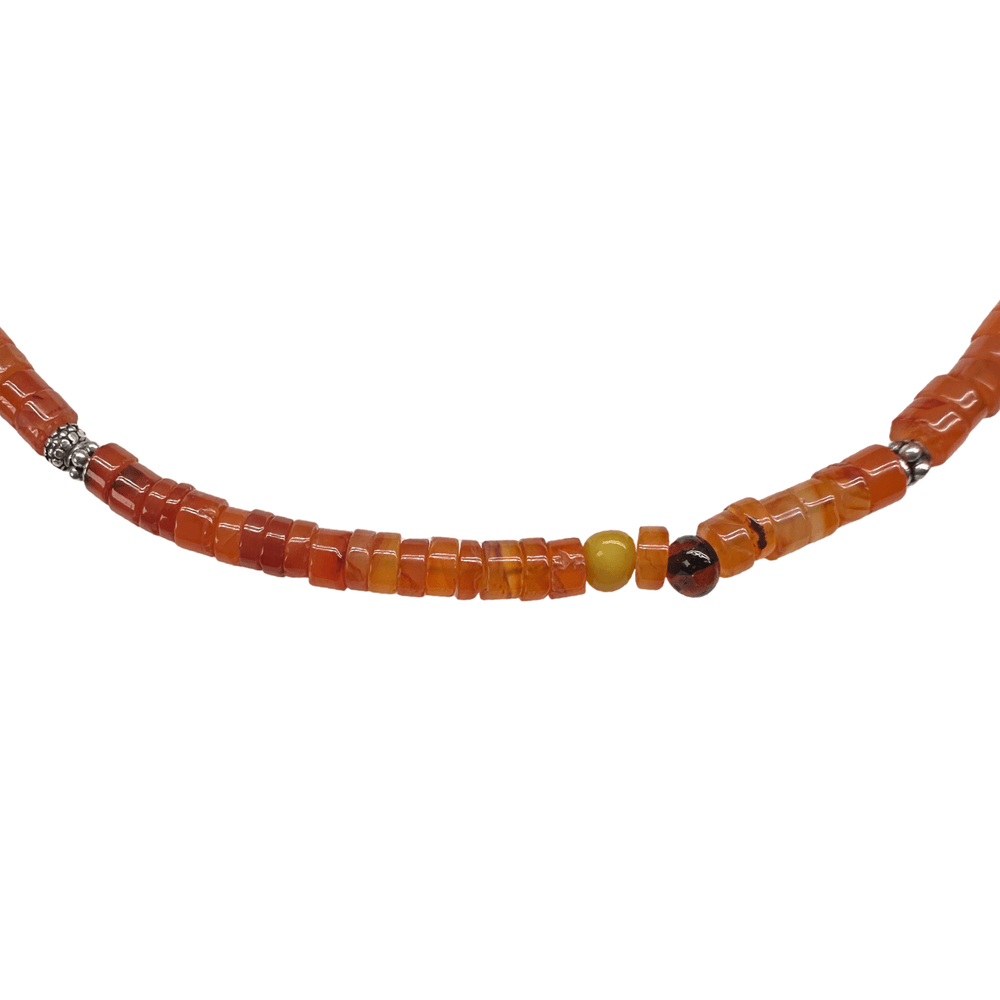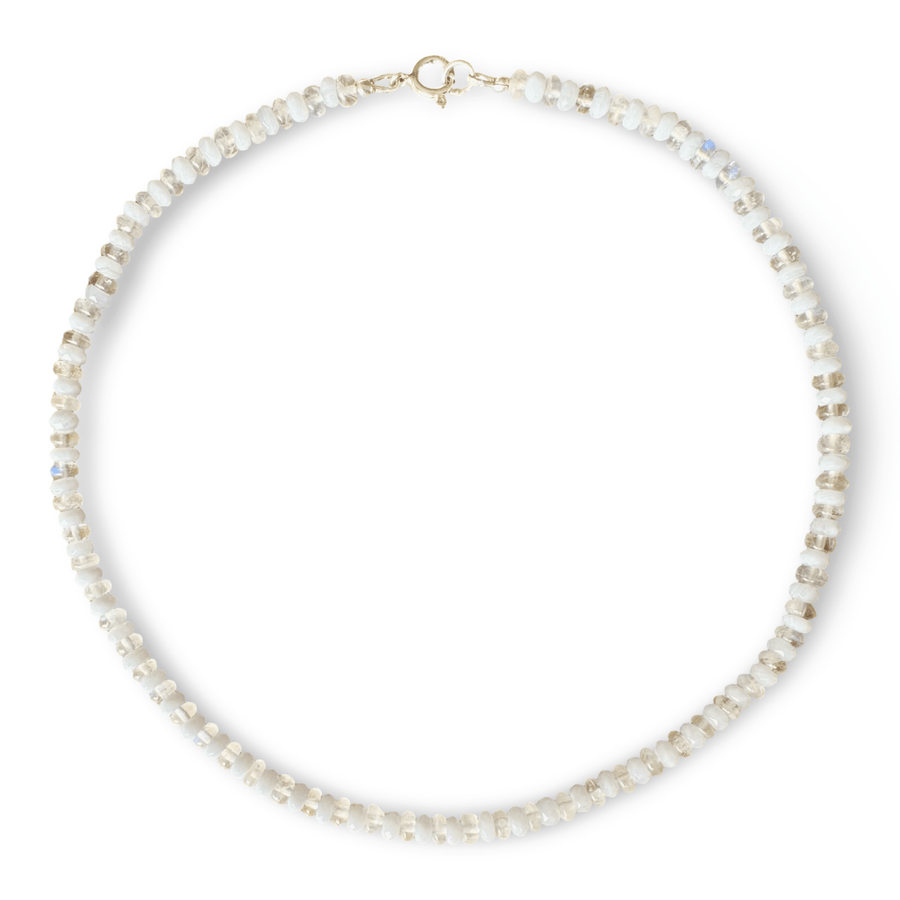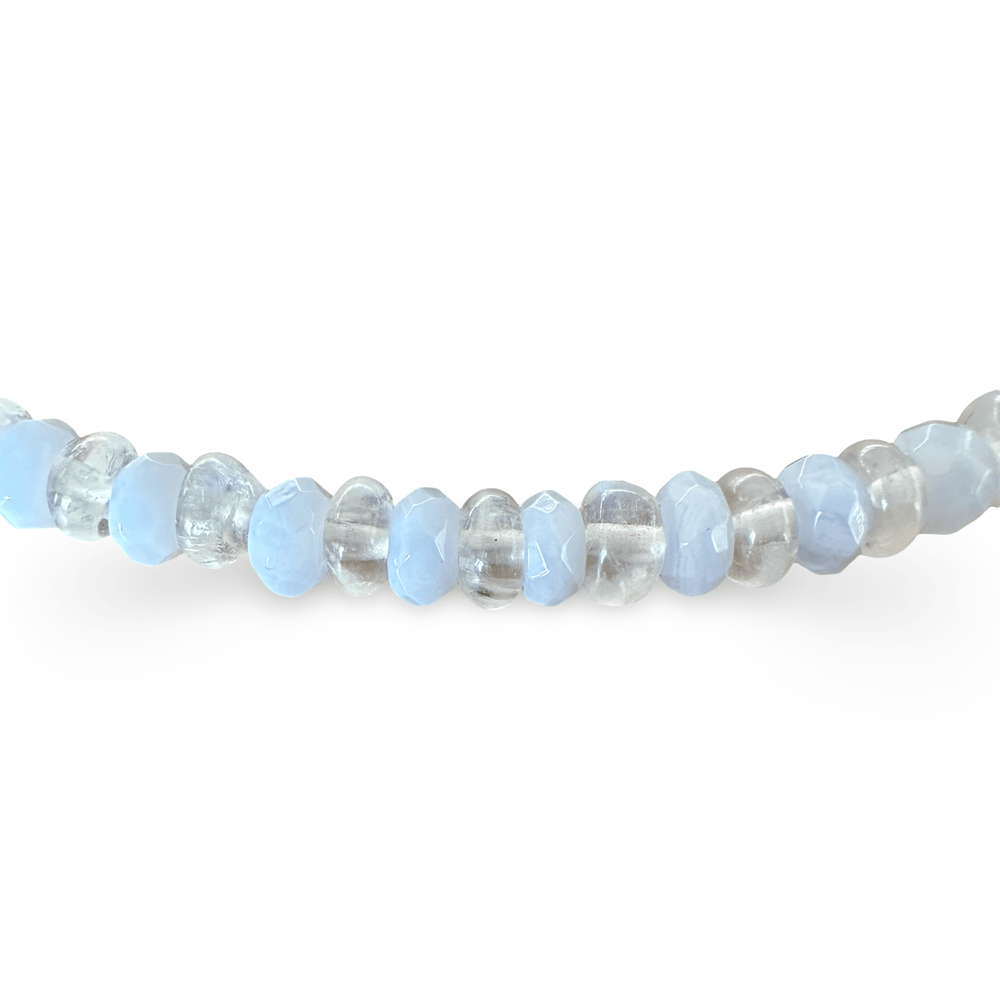Turquoise necklace with amber and coral
Noble necklace in traditional Tibetan jewelry colors and materials: Hand-knotted in the Tibetan studio from naturally shaped stone beads (diameter approx. 7 - 20 mm) from old pieces of jewelry, this piece of jewelry combines turquoise, amber and coral - all of which are significant materials in Tibetan culture. The necklace is fastened with a silver spring clasp, measures 44.5 cm in circumference and weighs 56 g.
Turquoise is a bright blue to greenish gemstone that plays a central role in Tibetan jewelry. Traditionally, it is often used together with amber, coral and silver. In Tibetan culture, turquoise stands for protection, prosperity and spiritual strength. It is a symbol of the connection between heaven and earth. Believers often wear turquoise as an amulet or in prayer chains to attract good luck and positive energy. The jewelry is usually made by hand, which gives each piece an individual touch and is deeply rooted in Tibetan tradition.
Corals have a deep spiritual and cultural significance in traditional Tibetan jewelry. The red precious coral (Corallium rubrum) is particularly prized. In combination with turquoise and silver, coral beads are a characteristic element of Tibetan prayer beads(malas), amulets and ritual jewelry. As Tibet is a landlocked highland, coral was imported from the Mediterranean and the Southeast Asian region via centuries-old trade routes. Nowadays, precious coral is strictly protected, which is why modern Tibetan jewelry is made with old, recycled coral or sustainable alternatives.
Amber is a warm, golden yellow gemstone made from fossil resin that plays an important role in Tibetan jewelry. In traditional pieces of jewelry, it is often used in combination with turquoise, coral and silver. In Tibetan culture, amber symbolizes protection, healing and wisdom. Monks and believers often wear amber as a talisman to ward off negative energies. The processing is usually done by hand, which makes each piece of jewelry unique and gives it a high cultural value.
Bracelets, bracelets, bracelets, bracelets, chains
| age | Wrist circumference |
|
Newborn |
9 - 12 cm |
|
6 months - 3 years |
12 - 14 cm |
|
4 - 10 years |
14 - 15 cm |
|
Teenager, ladies (XS) |
15 - 16 cm |
|
Ladies (M) |
16 - 17 cm |
|
Ladies (XL) |
18 - 19 cm |
|
Men (M) |
18 - 20 cm |
|
Men (XL) |
21 - 22 cm |
The length of the bracelet may be 1 cm to 3 cm longer than the measured wrist circumference, depending on your taste.
Finger rings
| Ring size | Inner diameter | Inner circumference |
|
48 |
15,3 mm |
48 mm |
|
50 |
15.9 mm |
50 mm |
|
52 |
16.6 mm |
52 mm |
|
54 |
17.2 mm |
54 mm |
|
56 |
17.8 mm |
56 mm |
|
58 |
18.5 mm |
58 mm |
|
60 |
19.1 mm |
60 mm |
|
62 |
19.7 mm |
62 mm |
|
64 |
20.4 mm |
64 mm |
|
66 |
21.0 mm |
66 mm |
- Take a ring that fits well.
- Place it on a ruler and measure the inner diameter (from one inner edge to the other).
- Compare the diameter with the table to determine the ring size.
- Take a thin strip of paper or thread.
- Wrap it around the part of the finger where you want the ring to sit (not too tight).
- Mark the point where the ends meet.
- Measure the length of the strip in millimeters. This is the inner circumference.
- Find the right size in the table.
- Measure the finger size in the evening, as fingers swell slightly during the day.
- If you are between two sizes, choose the larger size.
- Make sure that the ring fits over the knuckle.
- Free shipping from CHF 150


